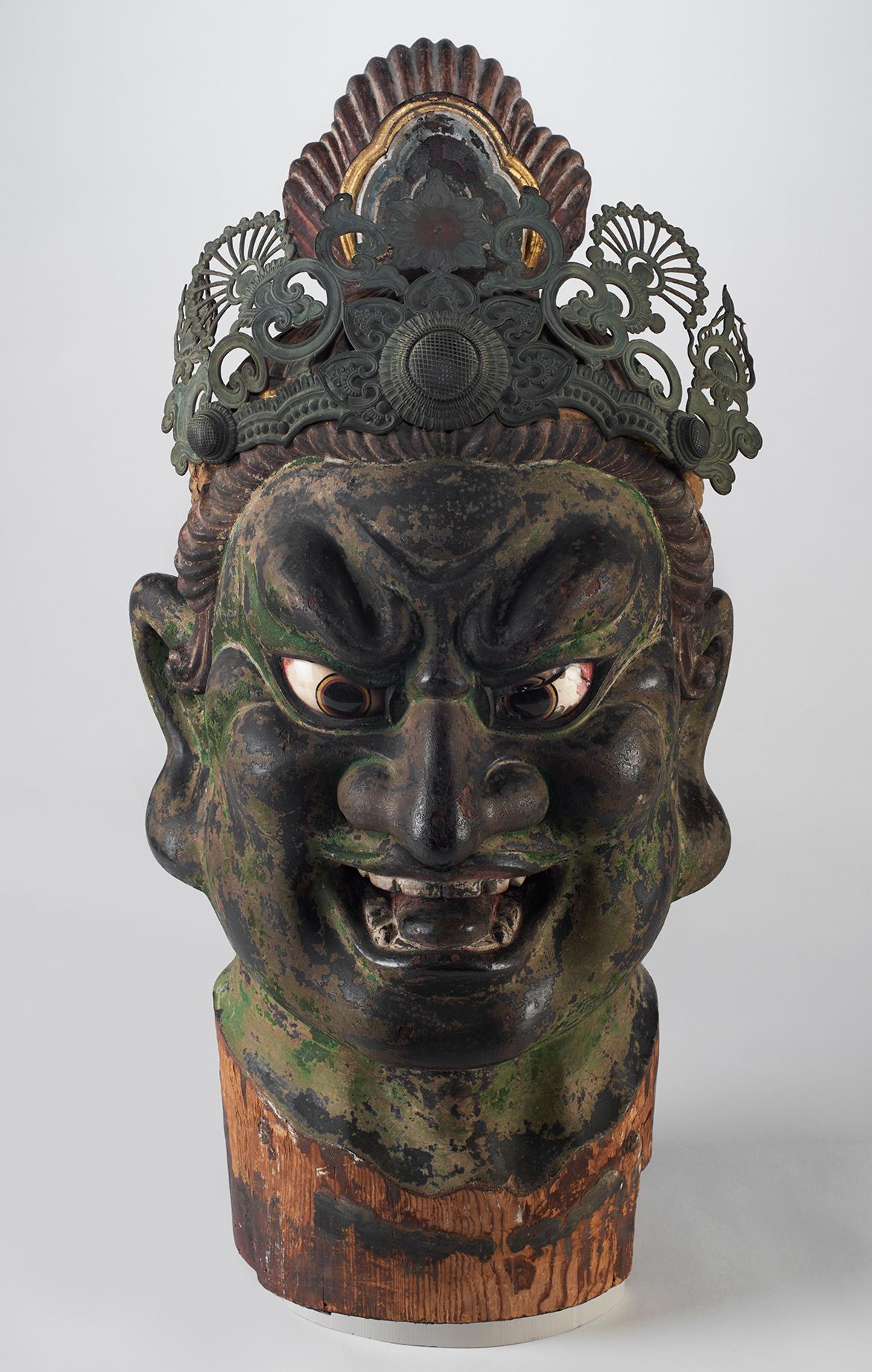Head and Torso of a Buddha

Brooklyn Museum photograph
About this Brooklyn Icon
The Brooklyn Museum is commemorating its 200th anniversary by spotlighting 200 standout objects in its encyclopedic collection.
Sculptors in Thailand developed a distinctive type of Buddha image during the Sukhothai period, characterized by elongated and curling limbs, fingers, and toes. This remarkable example of a Sukhothai Buddha has lost its arms and legs, but their absence draws our attention to the exaggerated curves in the rest of the body.
Buddha images have elongated earlobes because the historical Buddha, Shakyamuni, gave up his heavy earrings, along with the rest of his wealth, when he decided to pursue a spiritual life. Here, his earlobes flip up slightly at the ends, a decorative detail not seen on most Buddha images made outside of Thailand. His long neck sits atop very wide shoulders and then his torso tapers dramatically, terminating in a narrow waist.
The stylization and beautification of the Buddha’s body suggest that his enlightenment made him more graceful and less earthly than mere humans. That idealization typically extends to the face, with the eyebrows coming together in a smooth point. In this example, carefully rendered pursed lips and a soft jaw make the Buddha look more human and organic.
Object Label
The Sukhothai Period (1250–1378) was a great period of Thai sculpture, when a national style emerged. This is evidenced by the heroic proportions of the Sukhothai Buddha torso and head. As an exemplary work or monumental bronze casting, the Buddha eminently demonstrates that statuary made in later periods could be enormously expressive. The expansive chest is covered by a transparent garment covering only the left shoulder. The silhouette is evoked by a few schematic folds of the drapery. The Buddha possesses such features of supernatural anatomy as the ushnisha (cranial protuberance), spiral curls, and extended earlobes, which reflect back to the days before his enlightenment, when he wore heavy earrings as the Indian Prince Siddhartha.
Caption
Head and Torso of a Buddha, 14th century. Bronze, 38 x 22 1/2 x 11 in., 189 lb. (96.5 x 57.2 x 27.9 cm, 85.73kg). Brooklyn Museum, Purchased with funds given by the Charles Bloom Foundation, Inc., in memory of Mildred and Charles Bloom, 88.94. (Photo: Brooklyn Museum)
Tags
Collection
Collection
Title
Head and Torso of a Buddha
Date
14th century
Period
Sukhothai Period
Geography
Place made: Thailand
Medium
Bronze
Classification
Dimensions
38 x 22 1/2 x 11 in., 189 lb. (96.5 x 57.2 x 27.9 cm, 85.73kg)
Credit Line
Purchased with funds given by the Charles Bloom Foundation, Inc., in memory of Mildred and Charles Bloom
Accession Number
88.94
Have information?
Have information about an artwork? Contact us at
